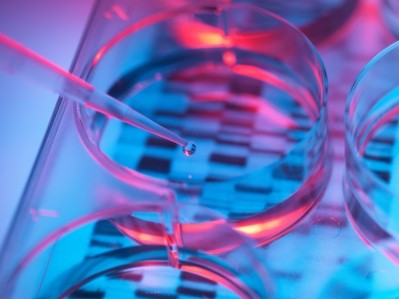Genomics expose the role of phytogenics in gut health: Biomin

We caught up with Franz Waxenecker, development director at that Austrian firm, to get an understanding of how omics work.
Besides its core business and competence related to mycotoxin control, the company has also been focused on gut health and performance since the late 1990s, he said.
And, more recently, his team has been relying on genome sequencing of animal tissue or gut mucosa in order to explore the anti-inflammatory and gut protection potential of feed additives: “The classical microbiology approach was aimed at gaining knowledge about what microbes were there, now, with omics technology such as transcriptomics and proteomics, we can determine what those microbes are doing.”
The team sees its responsibility as the translation of omics data into practical applications, flowing on from research outcomes.
“We have seen that phytogenic additives - essential oils and plant extracts - have an anti-inflammatory effect on gut tissue in monogastrics,” said Waxenecker, and he has referenced various studies backing up those results in a recent paper.
Building the case
He cited Eder et al. (2013) whose findings show that, in an in vitro test with Caco-2 cells, after challenging with TNA-alpha, phytogenics were able to downregulate the mRNA levels of Nf-kb target genes, considered an anti-inflammatory effect.
This effect was proved also in vivo by Eder and Gessner (2016), said Waxenecker, when they analyzed different parts of the gastrointestinal tract (GIT) and observed less inflammation in the tissue following the use of phytogenics in feed.
Overlap with mycotoxin research …
But the science of omics can also enable greater understanding of how mycotoxins work as well, said the development director. “We see a lot of overlap with our work on mycotoxin inhibition, in that the presence of mycotoxins influences gut integrity,” said Waxenecker.
An important part of the GIT barrier function are the epithelial cells, connected by tight junctions to each other and covered by mucus produced by goblet cells. If barrier function has been damaged through thinner mucus layer, shorter villus, or destroyed tight junctions, pathogen bacteria may cross, undermining the metabolism and growth of animals, said Waxenecker.
Antonissen et al. (2014), found mycotoxins are able to increase the permeability of the intestinal epithelial layer by the down regulation of the genes coding for the transmembrane tight junction proteins, Claudin 1 and Occludin. While, in an experiment with broiler chickens, Grenier et al (2011) found the mycotoxins, deoxynivalenol and fumonisin B1 and B2, down regulated the expression of the duodenal genes coding for MUC-2, he said.
But Mountzouris (2016) reported an increased expression of intestinal MUC-2 in presence of phytogenics, which indicates that the GIT barrier function can be protected by phenolic substances, said Waxenecker.
Antibiotic resistance
Genomics technology also can inform the study of antibiotic resistance genes in monogastrics, he said.
“Gene sequencing of the gut microbiome helps us see that the presence of antibiotic resistance genes can be reduced through the use of natural alternatives to antibiotics growth promoters,” explained Waxenecker.
He cited the results of an study by Roth (2014), whose results indicated that a feed additive consisting of organic acids, cinnamaldehyde and a permeabilizer reduced ampicillin resistant and multi-resistant E.coli in piglet’s fecal samples.
She found the lower the counts of resistant bacteria in the intestinal flora, the lower the possibility the genes encoding resistance will be transferred to other bacteria including pathogenic ones.
“Genomics, thus, give us proof that the microbes are not been give protection against organic acids and phytogenics,” said Waxenecker.









